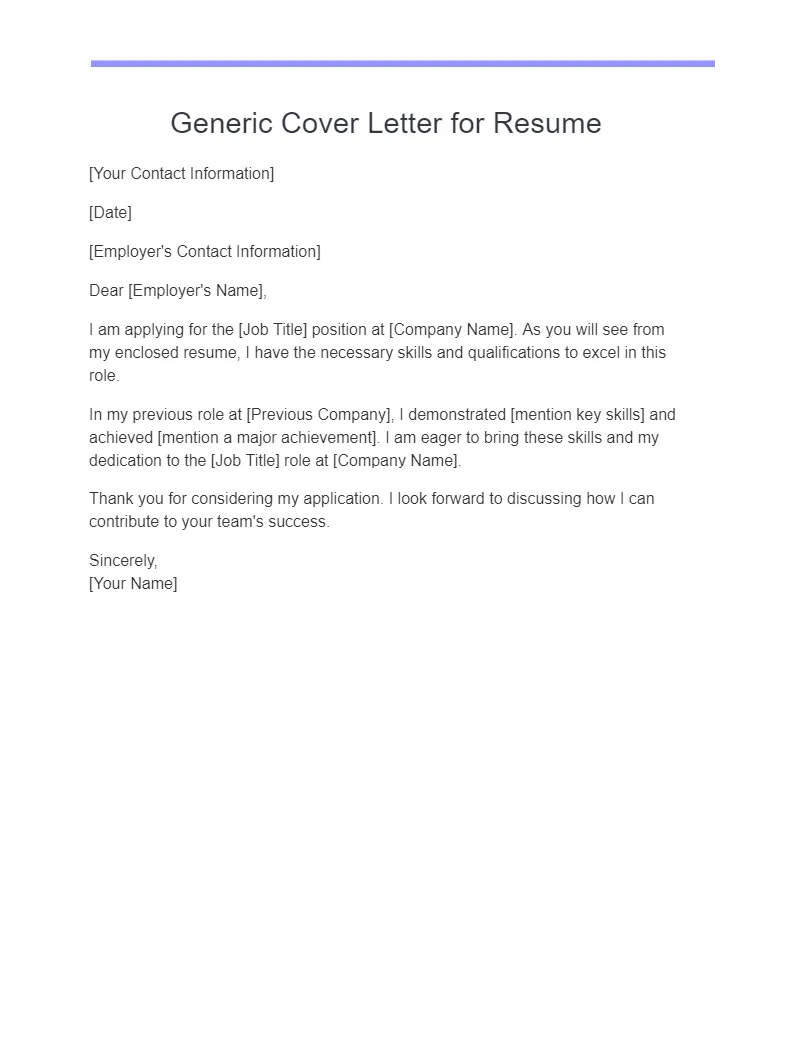What is a Cover Letter and Why Is It Important?
A cover letter is more than just a formality; it’s your first opportunity to make a strong impression on a potential employer. It’s a concise document that accompanies your resume, providing context to your qualifications and expressing your interest in a specific job. It’s your chance to showcase your personality, your communication skills, and your genuine enthusiasm for the position and the company. Without a well-crafted cover letter, your resume might get overlooked, as it lacks the personalized touch that often tips the scales in your favor.
Understanding the Purpose of a Cover Letter
The primary purpose of a cover letter is to introduce you to the hiring manager and explain why you are the perfect fit for the role. It gives you a platform to elaborate on your resume by highlighting specific skills, experiences, and achievements that align with the job requirements. It’s also a great place to demonstrate your writing abilities, which are essential for many positions. Furthermore, a cover letter allows you to express your genuine interest in the company and show that you’ve researched their values and mission.
The Role of a Cover Letter in Job Applications
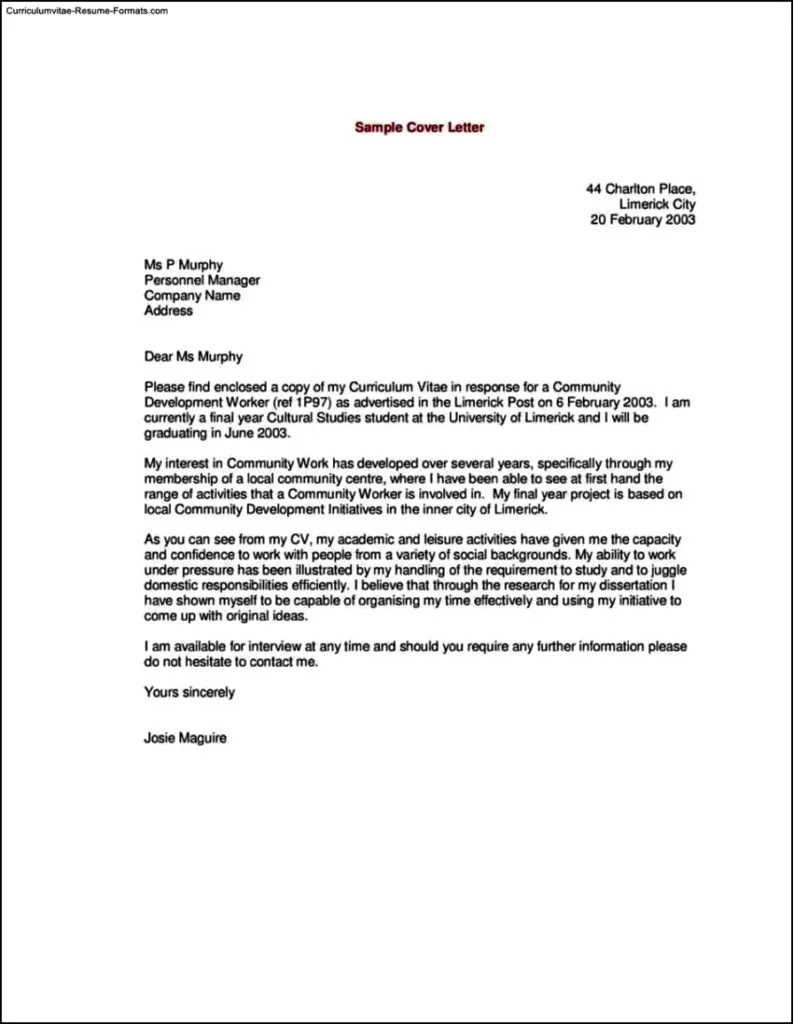
In the competitive job market, a cover letter often serves as the deciding factor between getting an interview and being overlooked. It’s your chance to stand out from the crowd by demonstrating your unique value proposition. A compelling cover letter clearly articulates how your skills and experiences match the job’s needs, providing a compelling narrative that the resume alone cannot. It’s a tool to connect with the hiring manager on a personal level and present yourself as a well-rounded candidate who is genuinely interested in the opportunity. This personalized approach helps differentiate you from other applicants.
Key Components of a Cover Letter
A well-structured cover letter typically includes several key components. These include your header, a personalized greeting, an introductory paragraph that states your interest, body paragraphs that highlight your relevant skills and experiences, a closing paragraph, and a call to action. Each component contributes to a cohesive message that showcases your qualifications and enthusiasm. Pay attention to the order and flow of these elements to effectively convey your message and leave a lasting impression on the hiring manager.
Header and Contact Information
The header should include your full name, address, phone number, and email address. It’s essential to ensure that this information is accurate and up-to-date. The header usually goes at the top of the page. You might also include the date and the recipient’s contact information, such as their name and title. This shows that you’ve paid attention to detail and taken the time to personalize the letter. Remember, a professional-looking header sets the tone for the rest of your cover letter.
Personalized Greeting and Introduction
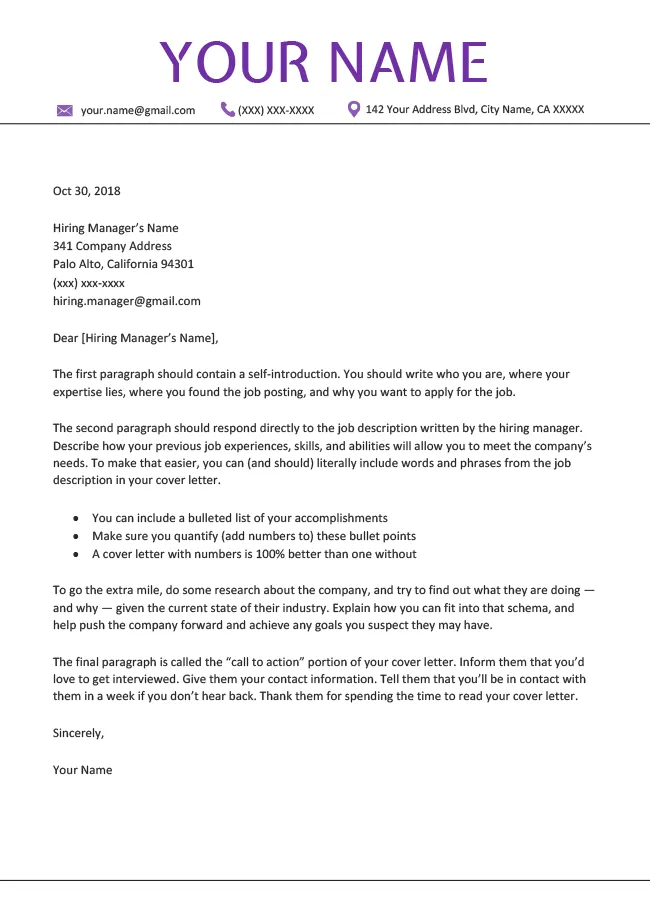
Avoid generic greetings like “To Whom It May Concern.” Instead, try to find the hiring manager’s name and address them directly. Start with a strong opening statement that immediately captures the reader’s attention and clearly states the position you are applying for. Your introduction should spark interest by briefly mentioning your key qualifications and your enthusiasm for the role. Making a great first impression with a tailored greeting and a compelling introduction is vital.
Body Paragraph 1 Highlighting Skills and Experience
The first body paragraph is where you provide a concise overview of your relevant skills and experience. Focus on skills and experiences that are directly relevant to the job description. Back up your claims with specific examples and quantifiable achievements. Use keywords from the job posting to demonstrate that you meet the requirements. Tailor this section to match the specific job requirements, ensuring a strong alignment between your qualifications and what the employer is seeking.
Body Paragraph 2 Showcasing Achievements and Results
This is the paragraph where you showcase your achievements and the results you have delivered in previous roles. Use the STAR method (Situation, Task, Action, Result) to provide specific examples of how you have made a positive impact. Quantify your achievements whenever possible by using numbers or data to illustrate your success. This section demonstrates the value you bring to the table. Highlight successes that prove your capabilities and leave a clear picture of your accomplishments.
Body Paragraph 3 Expressing Enthusiasm and Fit
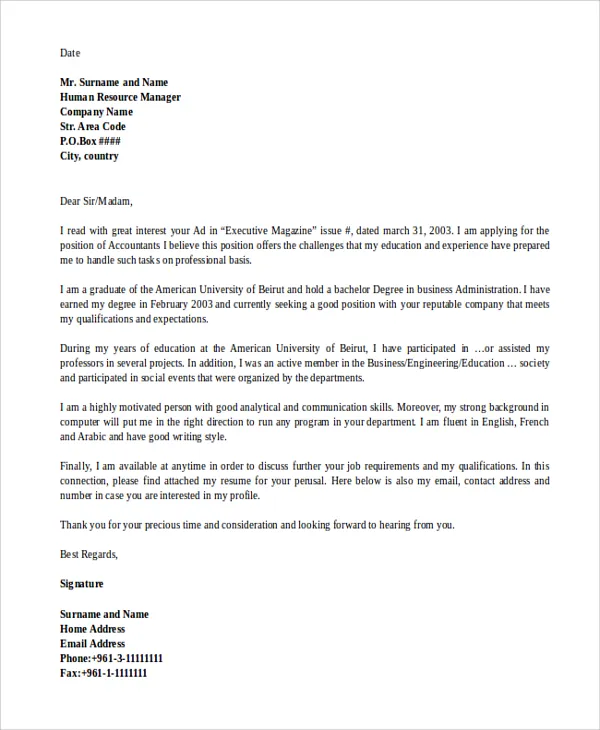
In the final body paragraph, express your enthusiasm for the specific opportunity and explain why you are a good fit for the company. Show that you have researched the company’s mission, values, and culture. Highlight what appeals to you about the role and why you believe you can contribute to the team’s success. This demonstrates your genuine interest and aligns your career goals with the company’s objectives. Be sincere and use your personal voice to create a strong connection.
Closing and Call to Action
Your closing paragraph should reiterate your interest in the position and thank the hiring manager for their time and consideration. Include a clear call to action by stating that you look forward to hearing from them soon and are available for an interview. Your closing should be professional and leave a lasting positive impression. End with a professional closing such as “Sincerely” or “Best regards” followed by your typed name.
Formatting and Design for Impact
Effective formatting is crucial for a well-presented cover letter. Use a professional font like Arial or Times New Roman with a font size between 10 and 12 points. Use single-spacing for the body of the letter and one space between paragraphs. Ensure that your letter has a clean, uncluttered layout with ample white space to make it easy to read. Consistent formatting creates a professional image that appeals to the reader.
Font Choices and Readability
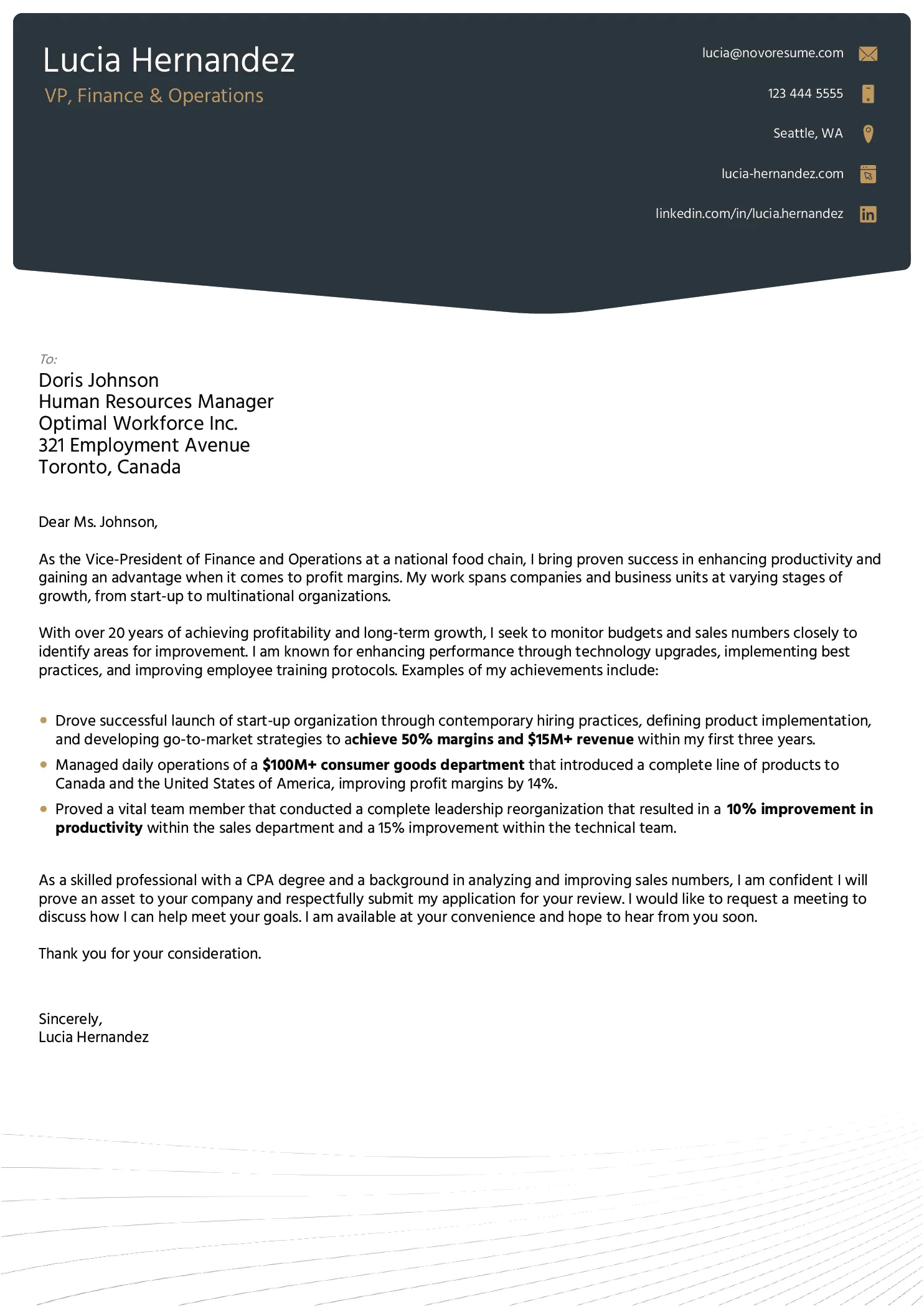
Select a readable font that is easy on the eyes. Stick to common, professional fonts such as Arial, Calibri, or Times New Roman. Avoid using overly decorative or stylized fonts, as they can detract from readability. The goal is for the hiring manager to easily read and understand your message, so choose a font that conveys professionalism and clarity. Maintain consistency throughout the document.
Layout and White Space
The layout of your cover letter should be visually appealing and easy to navigate. Use white space to separate different sections of the letter. This creates a clean look and helps the reader focus on the content. Avoid cramming too much text onto a single page. Proper spacing and layout make it easier for the hiring manager to read and absorb the information. Be mindful of margins and ensure there is enough space around the edges of your page.
Proofreading and Editing for Perfection
Before submitting your cover letter, always proofread it carefully for any spelling, grammar, or punctuation errors. Errors can undermine your credibility. Use a grammar checker and ask a friend or family member to review your letter. Ensure your letter is free of any typos and reads smoothly. Paying attention to detail shows you care about presenting yourself professionally and competently.
Common Mistakes to Avoid
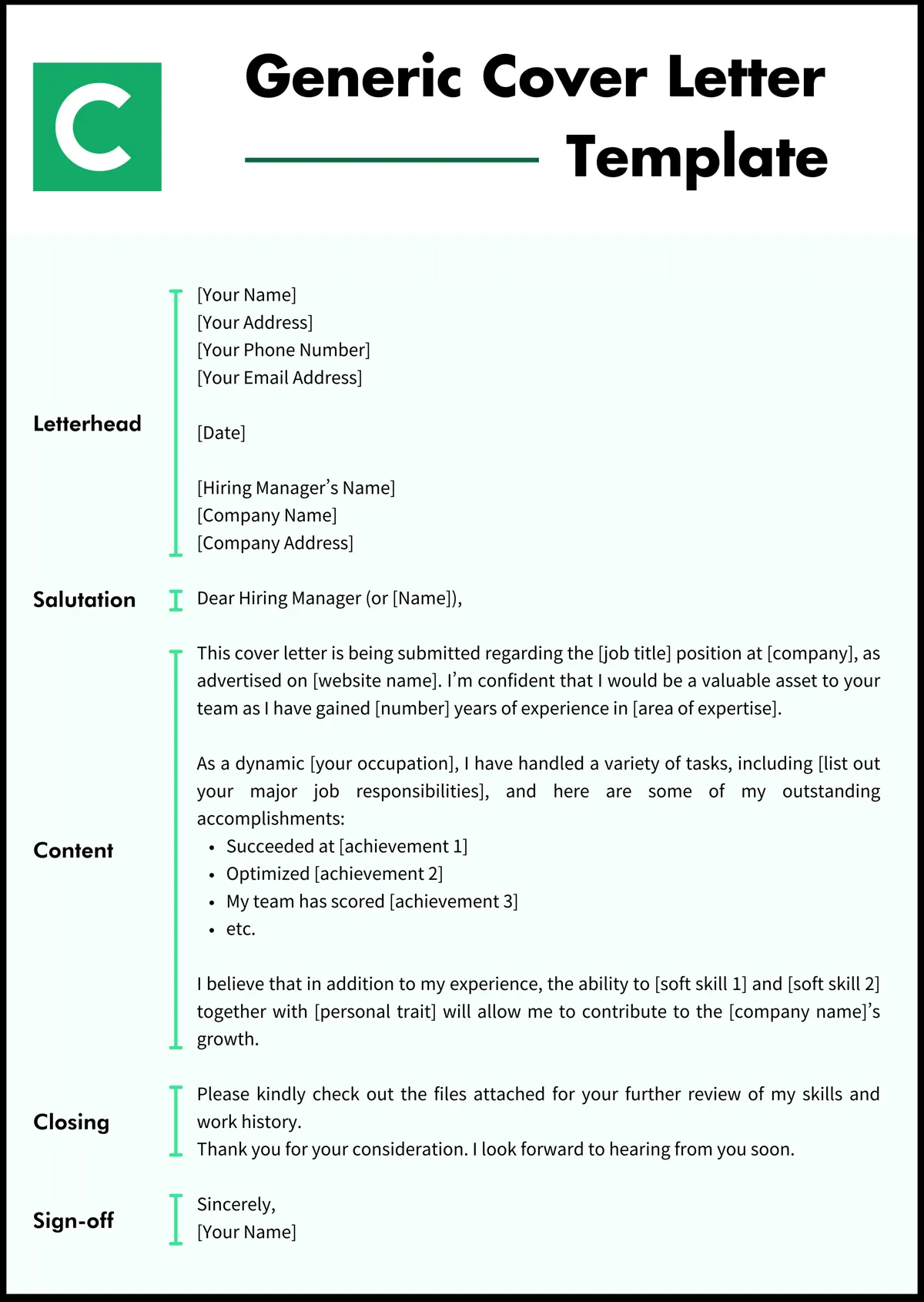
Many cover letters contain common mistakes that can hurt your chances. Avoid using generic templates that do not address the specific job or company. Do not repeat everything from your resume – instead, provide context. Avoid a negative tone or any negativity about previous employers. Do not exceed one page in length. Double-check your spelling and grammar. Always tailor your cover letter to the specific job and company to maximize your impact.
Generic vs Tailored Cover Letters
While a generic cover letter may be a starting point, tailoring your letter for each job application is crucial. Generic cover letters do not demonstrate that you’ve taken the time to understand the role or company. Tailored cover letters showcase your genuine interest and align your qualifications directly with the job requirements. Customizing your cover letter involves using keywords from the job description and highlighting relevant experiences and skills. This personalized approach significantly improves your chances of getting noticed.
Length and Tone Considerations
Keep your cover letter concise and to the point, ideally within one page. Use a professional tone throughout the letter. Avoid overly casual language or jargon. Match the tone of your cover letter to the culture of the company and the specific role you’re applying for. A professional tone will make a positive impression on the hiring manager. Adjust the tone to fit the job you are applying for – more formal for corporate jobs and a bit more relaxed for creative roles.
Customizing Your Letter for Each Application
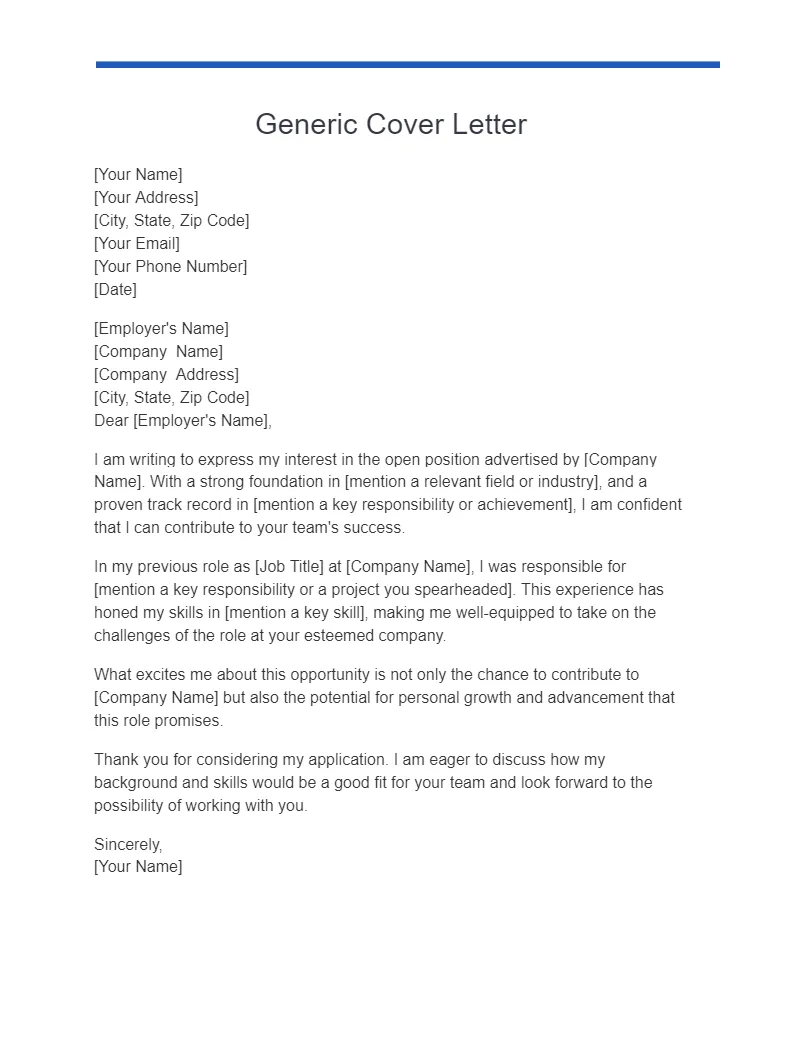
Customizing your cover letter involves researching the company and the specific role and tailoring the content to match. Read the job description carefully and highlight the key requirements. Use the same keywords and phrases in your cover letter to demonstrate that you have the qualifications they’re seeking. Show that you’ve done your homework and genuinely want the job. This level of personalization will significantly increase your chances of success.
Using Keywords Strategically
When writing your cover letter, incorporate relevant keywords from the job description. This will help your application get noticed by applicant tracking systems (ATS) and hiring managers. Identify the essential skills, experiences, and qualifications that the employer is looking for and weave them into your letter naturally. Do not stuff keywords randomly, though. The goal is to demonstrate a clear match between your skills and the job requirements.
Tailoring Content to Job Descriptions
Always customize your cover letter to match the specific job description. Each job posting will have different requirements and preferred skills. Carefully review the job description, and highlight the key skills and experiences that the employer is looking for. Focus on the specific responsibilities of the role and provide examples from your past experiences that showcase your ability to succeed. Tailoring your letter shows the employer that you pay attention to detail and understand the role.
Tips for Different Job Types and Industries
The approach you take in your cover letter can vary depending on the type of job and industry. For example, in creative industries, you may have more freedom to express your personality. In a more conservative industry, the tone should be professional and formal. Consider what is common in the field, and cater your letter to fit those industry standards. Always research the industry’s expectations when composing your cover letter.
Cover Letters for Entry-Level Positions
For entry-level positions, emphasize your skills and any relevant academic or extracurricular experiences. If you have limited professional experience, highlight any internships, volunteer work, or projects that demonstrate your abilities. Show your enthusiasm for learning and your willingness to contribute. Focus on transferable skills and your potential. Demonstrate your eagerness to start your career and make a positive impact.
Cover Letters for Mid-Career Professionals
Mid-career professionals should focus on demonstrating their accomplishments and career progression. Highlight your achievements, quantify your results, and explain how you have contributed to the success of your previous employers. Emphasize your leadership skills and experience managing projects or teams. Focus on how your expertise can benefit the new company. Demonstrate your ability to add value and your growth potential.
Cover Letters for Executive Roles
For executive roles, your cover letter should showcase your leadership skills, strategic thinking, and ability to drive results. Highlight your key accomplishments and the value you have created for previous organizations. Focus on your ability to lead teams, make strategic decisions, and achieve company goals. Tailor your letter to demonstrate your understanding of the company’s challenges and how you can contribute to their success. Ensure you convey your experience and executive presence.
